QuestionTank set up for 4 months.
10 Gallon tank.
I have a divider; male betta on one side, 2 female bettas and a pleco on the other side. 4 in all.
Top fin (it came with the tank, Top Fin Goldfish starter kit)
I'm not sure; I didn't think i needed to keep track for bettas.
Like, once every 6 months, I peridocially add distilled water if the level is getting low.
Gallons replaced: about half
OKay, I used to work at a Petsmart for about a year and have been told by everyone that female bettas can be kept in tanks with one another, along with communities of other fish. After the death of my male betta, I let the tank filter for about 2 weeks and bought 2 females. I put them in, letting the bag float for 20 mins and such and they were happy and fine and healthy for a good 2 weeks. Then, one night and the one female has the other by the tail and is pulling the other one and trashing her back and fourth repeatedly. I had thought originally the one she was thrashing about was dead, but she was still alive! I quickly caught the aggressive one and put her back in the cup I got her in, from the pet store. Now the one who got hurt, her fins are frayed and she was very distressed after the ordeal and I thought she would die from shock. Luckily, she recovered.
Was what everyone told me false? Are female bettas aggressive, just like the males? (and yes, i know for a fact they were BOTH females) Neither my male or female bettas have showed any aggression towards the 2 inch long pleco. What should I do? Should I keep the aggressive one separated completely? Should I worry about the safety of the pleco(he is in the same side as the female who was attacked)?
Any insight or help and suggestions are greatly appreciated. Thank you!
AnswerHi Amber;
There will always be exceptions to every rule in keeping pets. Each animal is an individual with it's own personality and aggression level. Some female bettas are quite aggressive and some are exceptionally mild. Some males are exceptionally mild too. It is also possible you have a short-finned male betta, often bred for fighting. Originally ALL male bettas had short fins. It was only through many generations of selective breeding that we have the long elaborate finnage we see now. Sometimes these short-finned varieties end up in the stores unknowingly, or there are simply a few "throwbacks" to the originals. The only way you can know for sure in this case that you have a female is to see her lay eggs. However, she could also kill your male, even if she isn't a male, just an aggressive female.
The size of their home is important as well. To try to keep more than one female betta in a 5 gallon space is risky, even with less aggressive females. Even sweet individuals are territorial to a certain extent. Providing more places to hide in the form of live plants would be very helpful. I wouldn't try keeping more than one female in anything smaller than a 10 gallon.
Water chemistry is very important, even for bettas. Test the ammonia, pH, nitrite and nitrate and the results can tell you if water changes are needed or if possible problems are imminent. It is important to make regular water changes using conditioned tap water. All tanks need a 25% water change once a week, every week. Regular partial water changes helps reduce nitrate, the end result of the biological processes in your tank. Nitrate (not nitrIte, it's different) doesn't "break down" in aquariums unless it is packed with live plants. Plants use it for food. Nitrate builds up and causes your fish to have slow growth, inability to breed, and immune system problems leading to disease. Adding water for evaporation doesn't count as a water change. Especially if the only fresh water ever added is distilled. Please don't use distilled water in your tank. Distilled water does not have any minerals that your fish require for long term good health. Your tank water also requires minerals to stabilize it's pH. It is especially not good as the only source of new water in a 6 month period of time. It should always be mixed with tap water or not used at all. Over time, sometimes just a few weeks, your tank water will become very soft and the pH will drop to dangerous levels. Please consider more frequent changes with tap water. Your fish will be healthier and more vibrant with much stronger immune systems. They'll love you for it!
At Your Service;
Chris Robbins

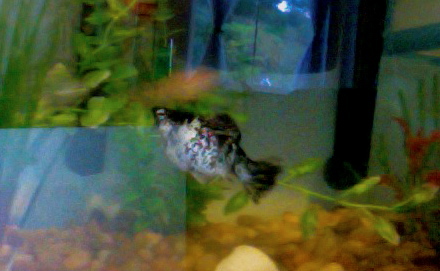 My Aquarium
Question
Dalmatian Molly
Alright wel
My Aquarium
Question
Dalmatian Molly
Alright wel
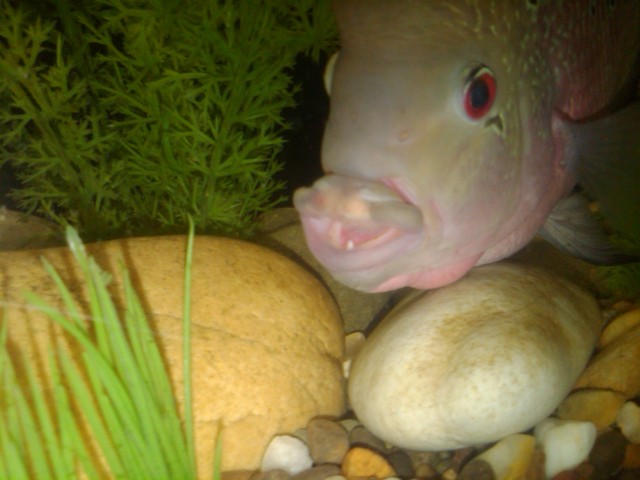 Sick Flowerhorn
Question
Swollen Lips
I have a beautiful Flowerhorn whi
Sick Flowerhorn
Question
Swollen Lips
I have a beautiful Flowerhorn whi
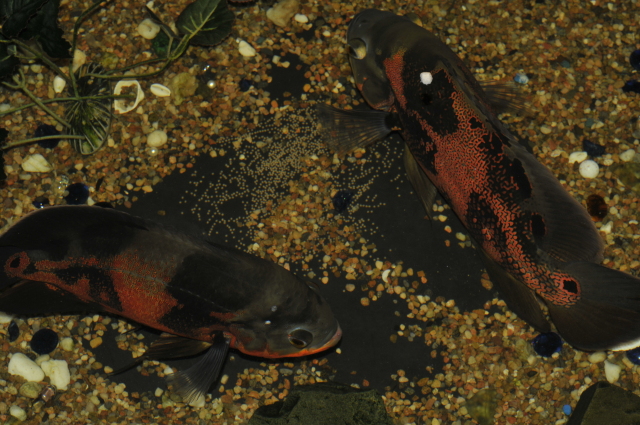 oscars breeding and egg laying
Question
Oz & Hobbs +
i have two african cichlids,
oscars breeding and egg laying
Question
Oz & Hobbs +
i have two african cichlids,
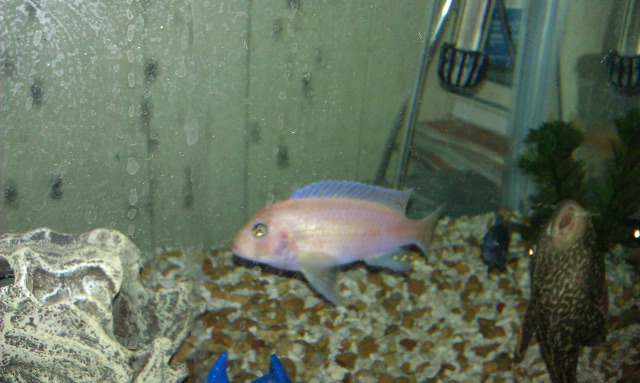 I need help identifying my new fish
Question
Pink Convict
Hello, Ive just recently p
I need help identifying my new fish
Question
Pink Convict
Hello, Ive just recently p
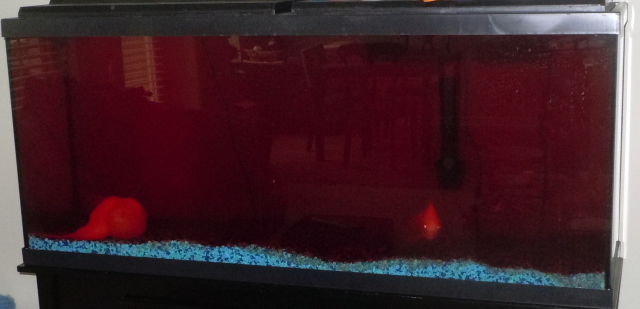 Update on Lionhead Oranda
Question
After effects of tetra
Hello again! Tha
Update on Lionhead Oranda
Question
After effects of tetra
Hello again! Tha